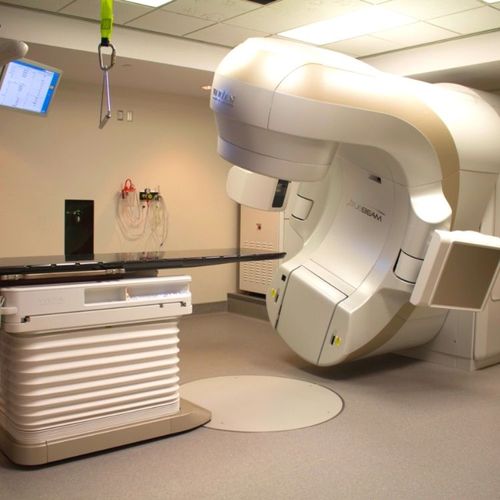Most of the 230,000 prostate cancers that are diagnosed in the US each year are found when the malignancy is still confined to the prostate. Choosing a treatment at this stage is not simple.
Active treatment-surgery and/or radiations is highly effective, but side effects, including impotence and urinary incontinence, are common. A majority of men who undergo treatment will develop impotence either immediately or within five years.
On the other hand, treatment may not even be required. While some prostate cancers are indeed dangerous and must be treated quickly and aggressively, others cause no harm. Unfortunately, it's impossible to say with certainty whether treatment-or no treatment-is more desirable.
Watchful Waiting
The most misunderstood option in treating prostate cancer is "watchful waiting." Many men believe that it means "doing nothing." It does not. 'Watchful waiting means following the cancer very closely. It aims to minimize unnecessary treatment of tumors that cause no trouble, while also taking precautions to avoid giving an aggressive cancer a dangerous head start.
The most obvious candidates for watchful waiting are men whose age (typically 70 and older) and other illnesses (heart disease, for example) make it unlikely that they will live long enough to have any ill effects from the prostate malignancy. But refinements in diagnosis have made watchful waiting a reasonable choice for some younger men as well-if it's done properly. Here's how...
Fully evaluate the tumor. Watchful waiting should be considered only for a tumor that appears unlikely to grow quickly. The key measure to look at is the Gleason score, which refers to the tumor "grade" (how abnormal the cells are and how likely they are to spread). Grades are assigned to the two areas of the prostate that have the highest and second-highest concentrations of cancer cells. The Gleason score (a number from 2 to 10) is expressed as the sum of the two grades (for example, 3 + 4 = 7). The lower the score, the better.
Prostate-specific antigen (PSA), the protein produced in excess by prostate tumors, also may be considered. When the PSA is less than 10, watchful waiting may be a possibility. If it is greater than 20, few doctors would advocate it. A PSA between 10 and 20 falls in a gray zone.
Repeat the biopsy within one year. If the cancer has gotten worse (a PSA or Gleason score that is significantly higher) within one year of the first biopsy, it will probably continue to worsen. How often to biopsy after that depends on age and other factors. A 55-year-old man may want to have a biopsy each year, to discover quickly if treatment is needed. A 75-year-old that has a low-grade tumor may not want to have a third biopsy for years. In both cases, a rectal exam and PSA testing should be done at least every year.
Surgery And Radiation
The most common treatments for localized prostate cancer-surgery and radiation-are comparably effective. Using either procedure, the cancer usually doesn't come back. They both carry similar (and substantial) risks of impotence and urinary incontinence.
Surgery involves removal of the entire prostate (prostatectomy). Technical advances have improved nerve-sparing surgery, which aims to protect potency and reduce incontinence risk by leaving the nerve bundle next to the prostate intact. This is only possible for some tumors and is not always successful in preserving function.
With laparoscopic surgery, the entire prostate is removed, but the operation is done through a thin tube, or laparoscope. It's less invasive than conventional surgery and involves less blood loss.
Men seem to recover faster when they undergo laparoscopic surgery (approximately three weeks versus six weeks for standard prostatectomy), and some reports suggest that there's a better chance of preserving potency-but neither has been definitively shown.
Latest development: Using robotic laparoscopic surgery, the surgeon views the operating field on a screen and manipulates surgical instruments that have precision controls. It takes years of training and experience to become truly adept at robotic laparoscopic surgery-there are few such experts nationwide. But most surgeons that are skilled in conventional prostatectomy can quickly master the robotic technique. It appears to be as effective as other types of surgery, but studies are ongoing.
Radiation therapy includes external beam therapy (the oldest type, which focuses intense energy on the tumor from a number of angles to destroy it, while limiting exposure of normal tissues). In brachytherapy, "seeds," or tiny pellets of radioactive material, are implanted within the prostate itself to deliver radiation to the tumor.
Latest development: Intensity-modulated radiation therapy (IMRT) finely adjusts an external radiation beam to conform to the shape of the tumor. And seeds can now be targeted more precisely using ultrasound imaging. Side effects include irritation to the bladder or rectum.
An Improved Alternative
Cryotherapy, which involves freezing the prostate to destroy it, is an alternative to surgery. Although this procedure was developed decades ago, only recent advances have made it a reasonable option.
The tissue-freezing instrument (cryoprobe) is smaller than previously (the diameter of pencil lead rather than a pencil), and the temperature can be adjusted more precisely, which reduces damage to other tissues.
Cryotherapy is far less invasive than surgery, and recovery is much shorter-only a week or two. Studies show that five- to seven-year survival and cancer control after cryotherapy are comparable with that offered by surgery or radiation. Cryotherapy is less likely to cause lasting urinary incontinence than other procedures.
